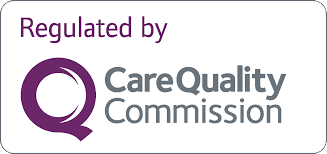When Spring comes..
For many of us Spring is welcomed with open arms signalling the end of a long, cold winter. It means we get to be outdoors more and enjoy the pretty colours of nature. Unfortunately for some, it means never-ending sneezing, coughing, itchy, watery eyes and much more. It means having to take an antihistamine tablet daily just to be able to open the windows and let the fresh air in. Why is this?
Histamine is an organic compound found naturally in the body. We get histamine from food as well, and it’s produced by mast cells (white blood cells) as part of our immune reaction.
Histamine is important for a few reasons:
- It works as a neurotransmitter so sends messages to the brain.
- It helps digestion by triggering the release of stomach acid.
- It is released after an allergic reaction or injury as part of our immune response.
There needs to be a balance in the amount of histamine in our bodies. When your body is not able to process the ingested histamine, or if you’re making too much, or your body is not able to break it down, it can lead to an intolerance.
Histamine is believed to impact at least 3 major functions in our gut:
- Motility i.e the movement of our bowels and it’s contents.
- Triggers stomach acid production which is essential for digestion of foods.
- Immune response to inflammation and infection in the gut.
We need a certain amount of histamine for our body to perform these functions. When there is too much, it can lead to symptoms such as diarrhoea, bloating and stomach cramps. Causes of high histamine in our gut:
- Bacterial overgrowth in our gut from not having enough stomach acid or food not getting digested adequately. Some of these bacteria will trigger your body to produce excess amounts of histamine.
- Eating histamine-rich foods such as cheese, wine, and cured meat.
- Insufficient DAO, an enzyme required to breakdown the excess histamine in our gut. Drinks such as alcohol, green tea, black tea, and certain energy drinks are known to block this enzyme.
Studies have shown an association between high histamine in the gut and ‘leaky gut’ conditions such as IBS and SIBO.
As mentioned previously, histamine is a neurotransmitter. This means it communicates messages to the brain. It’s part of our sleep-wake cycle. At the right levels, it stimulates the brain to be alert, awake and motivated. So, it makes sense that when we take an anti-histamine, we feel drowsy. The anti-histamine blocks off stimulation to the brain.
Just like in the gut, there is an enzyme in the brain, HMT, which is responsible for breaking down excess histamine. If we don’t have adequate levels of this enzyme, it can lead to symptoms such as headaches, migraines, fatigue, brain fog and anxiety.
Eating the right foods, ensures that you get the nutrients required for HMT to do it’s job. Sometimes additional supplements such as Quercitin and Butterbur are helpful, but it’s important to know how much and for how long to take these.
As part of our immune response to injury, pathogens or allergens, histamine (a mediator) is released from mast cells. Mast cells are located in our gut, lungs, in our skin and around blood vessels.
Mast cells, a type of white blood cell, causes an inflammatory reaction, so you may see hives develop on your skin, or your skin feels itchy, and may even become swollen in extreme cases when you have an insect bite, a bee sting, or your skin comes into contact with an allergen- something that you are allergic to.
This same type of inflammatory reaction takes place in your gut, heart and lungs when exposed to a pathogen eg. a virus or bacteria.
- In your lungs, you may experience trouble breathing, wheezing.
- In your heart and blood vessels, low blood pressure, or a fast heart rate.
Recent articles in medical journals have cited mast cells to be the main source of cytokine release that lead to lung damage in SARS-Co-V2. Those suffering with long Covid have had some improvement by using anti-histamines and other mast cell stabilisers.
And lastly, the link between histamines and our hormones. Lara Briden, author of Period Repair Manual and Hormone Repair Manual, explains this well.
Histamine symptoms are more common in women and often track with the menstrual cycle, occurring when oestrogen is high at ovulation and then again just before the period.
The connection between mast cells, histamine and hormones is that:
- Oestrogen stimulates mast cells to release histamine and blocks the DAO enzyme that clears histamine. At the same time, histamine stimulates the ovaries to make more oestrogen. The net result can be a vicious cycle of oestrogen → histamine → oestrogen → histamine.
- Progesterone stabilises mast cells, up-regulates DAO, and can therefore reduce histamine.
Many symptoms of ‘oestrogen dominance’ are actually symptoms of histamine or mast cell activation. This includes increased symptoms of PMS, brain fog, fatigue, cold hands and feet, mood swings, irregular periods and low libido, to name a few.
There are several ways of supporting our body if you develop a histamine intolerance, so that you can go back to enjoying the outdoors, foods that you love, have reduced PMS symptoms and feel better overall.
- Knowing which foods to avoid.
- Specific probiotics and supplements.
- Knowing your histamine threshold.
Histamine intolerance should not be self-diagnosed. Speak to your GP or contact the Mosaic Medical team on hello@mosaic-medical.com
Dr Priya Bhana is a Functional Medicine GP in South West London.










